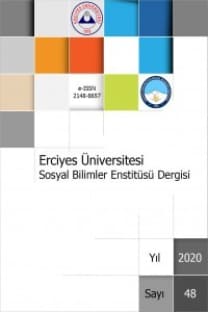LİSE ÖĞRENCİLERİNİN ELEKTRİK VE MAGNETİZMAYI KAVRAMSAL ANLAYIŞLARI ÜZERİNE NİTEL BİR ÇALIŞMA
Bu çalışma bir grup lise öğrencilerinin elektrik ve manyetizma kavramlarını nasıl anladıklarını keşfetmek için dizayn edilmiştir. Bu araştırmadaki araştırmayı yönlendiren sorular: (1) Lisede okuyan öğrencilerin elektrik ve manyetizma kavramlarını nasıl anlamaktadırlar? ve (2) Elektrik ve magnetizma kavramlarını öğrenirken yaşadıkları zorluklar nelerdir? Kısaca, Lise öğrencilerinin elektrik ve manyetizma kavramlarını anlamak için nasıl bir süreçten geçtikleri ve yaşadıkları zorlukları bu araştırmanın ana sebepleridir. Bulgular göstermektedirki öğrencilerin çoğu öğrendikleri bilgileri hemen unutmaktadır ve bunun çözümlerinden birisi olarakta problem çözme ile öğrenme tekniğinin kullanılması tavsiye edilmektedir
Anahtar Kelimeler:
Fizik Eğitimi, Fen Eğitimi, Elektrik ve Magnetizma, Kavramsal Değişimler
A Qualitative Study on High School Students’ Conceptual Understandings of Electricity and Magnetism
The present study is designed to explore a group of high school students’ perceptions of fundamental principles of electricity and magnetism. Primarily, this research is guided by the following research questions: (1) what are the common conceptual knowledge do high school students possess about electric current and magnetism? And (2) what are the possible difficulties or misconceptions and possible solutions students have in the concepts? To summarize, we sought to investigate high school students’ conceptual and cognitive understandings of electricity and magnetism at a local public school in the state of Ohio in the United States. The findings revealed that most of the students could retain only inadequate amount of the topics studied in elementary physics courses and for that reasons remedies are suggested to enhance their knowledge such as including problem-based learning (PBL) strategies in the curriculum studies
___
Akarsu, B. “Instructional Desings in Quantum Physics: A Critical Review of Research”, Asian Journal of Applied Sciences, Online First Version, 2011, pp. 1-7.Bloom, B. S., Engelhart, M. D., Furst, E. J., Hill, W. H., & Krathwohl, D. R. (Ed.), Taxonomy of Educational Objectives: Handbook I: Cognitive domain, David McKay, New York, 1956, pp. 20-30.
Boo, H. K., Pre-service Primary Teachers’ Constructed Knowledge of Physical Science Concepts, Proceedings of the Redesigning Pedagogy: Research, Policy, Practice Conference, Singapore, May - June 2005.
Borges, R., Aspects of Understanding Electricity, Kiel: Schmidt & Klaunig, pp. 205-214.
Cutnell, J. D., Physics, Wiley, 5th ed., 2001, pp. 451-480. Duit, R., “The Meaning of Current and Voltage in Everyday Language and Its Consequencesfor Understanding the Physical Concepts of the Electric Circuit”, Physics Education, 71 (3), 1985, pp. 81- 93.
Driver, R., Squires, A., Rushworth, P., & Wood-Robinson, V., Making Sense of Secondary Science: Research into Children's Ideas, Routledge, New York, 1994.
Fredette B., and Lochhead J., ‘’Students’ Conceptions of Simple Circuits’’, The Physics Teacher, March 1980, pp. 194 – 198.
Hewitt, P., “Circuit Happenings”, Latin American Journal of Physics Education, 1(1), 2007, pp. 1-3.
Giancoli D. C., Physics: Principles with Applications, Prentice Hall; 6th ed., New York, 2004, pp. 125-192.
Osborne, R., Electric Current: A Working Paper of the Learning in Science Project, N.Z., University of Waikato Hamilton, 1980.
Serway, R. A., Physics for Scientists and Engineers, 4th ed., Saunders, New York, 1996.
Tiberghien, A., Critical Review of the Research Aimed at Elucidating the Sense that Notion of Temperature and Heat have for Students Aged 10 to 16 Years, Proceedings of the First International Workshop Research on Physics Education, Editions du CNRS, Paris, 1983, pp. 73-90.
- Yayın Aralığı: Yılda 2 Sayı
- Yayıncı: Erciyes Üniversitesi
Sayıdaki Diğer Makaleler
Nasturi Toplumunda Hayvan Yetiştiriciliği ve Ticareti (XIX. Yüzyılın İkinci Yarısında)
Anlatıya Dayalı Bir Kent Okuması: Kayseri Sahabiye Mahallesi
İkinci Dünya Savaşı’nda Türk Dış Politikası
Tarih-Edebiyat Bağlamında A.Soljenitsin’in Eserlerinde Figürler
Ali Cüneyt ÇETİN, Cemal ELİTAŞ
LİSE ÖĞRENCİLERİNİN ELEKTRİK VE MAGNETİZMAYI KAVRAMSAL ANLAYIŞLARI ÜZERİNE NİTEL BİR ÇALIŞMA
Necâtî Beg’in Dîvân’ı ile Mecmû’a-yı Kasâyid-i Türkiyye’de Bulunan Kasîdelerine Eleştirel Bakış
